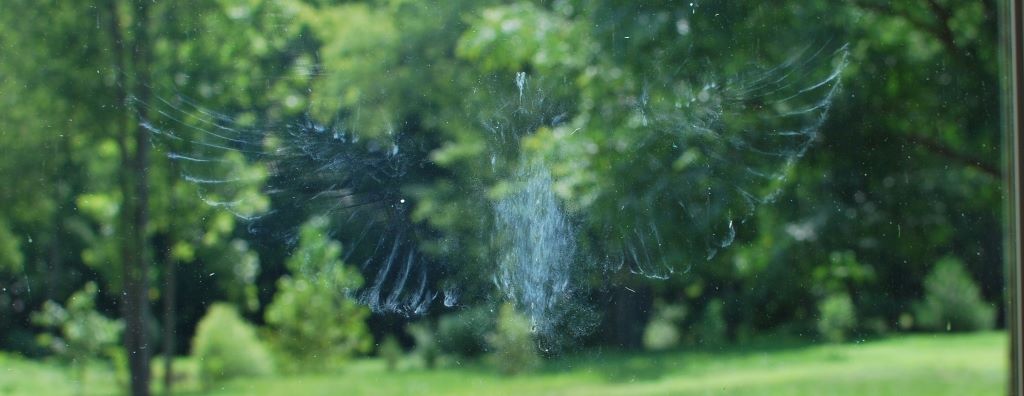
A while back I blogged about birds pecking at windows when they see their reflection and about birds running into windows. About a billion birds per year fly into windows and die, the second greatest source of human-caused avian mortality; cats are first . Birds run into windows because they either see the habitat (trees, bushes) behind them reflected in the window or see through the window so clearly that it appears safe to fly through. A bird hitting a window at 20-30 mph is usually killed due to head and brain injuries. Many people think birds break their necks, but that’s a misconception because unconscious or dead birds’ heads droop. They droop because birds have 12-25 cervical (neck) vertebrae, making their neck very flexible as it needs to be so that birds can groom their feathers.
Recently I have been reading about new standards for “bird-safe” buildings that have been adopted in San Francisco , guidelines for Toronto buildings and extensive information on the subject by the American Bird Conservancy .
There are a number of ways to prevent or at least diminish bird strikes into windows or other parts of buildings: making the windows obvious to birds so that they avoid them, blocking the windows so the birds simply cannot hit them, and minimize the building lighting at night. If you are interested, read the references I provided links for above.
What prompted my reading is an inquiry of an architectural firm who asked if I would be interested in helping them design the bird-safe aspect of a new condominium project in downtown San Francisco. I met with them and thought this would be an interesting and educational venture for me.
What I don’t know as yet is how dangerous The City is to birds. There are lots of European Starlings, House Sparrows, and Rock Pigeons, but I suspect most of them grow up in the city and learn to deal with it. Gulls and terns in and around the bay don’t seem to venture into the city, and so the potential danger is to migrants who pass through, over, and around the city during migration time. Nearly 400 species of birds have been noted in the city although I suspect that less than half that occur with any frequency. So, I plan to talk to the local Golden Gate Audubon and others who might have information about bird mortality in San Francisco and spend a few days there during fall migration myself.
The structure of the glass window panes for the condos has not been decided upon and if the architects decide to come up with their own design, I’ll get to field test it for its bird-safe rating.
I’m involved in a lot of bird-related activities, but I don’t get much chance to do something really professional, so I’m looking forward to this project. And it’ll give me something to do in San Francisco besides visit Fisherman’s Wharf.
P.S. The project was cancelled but I got to do a lot of reading about how dangerous building windows are to birds .